Related Research Articles
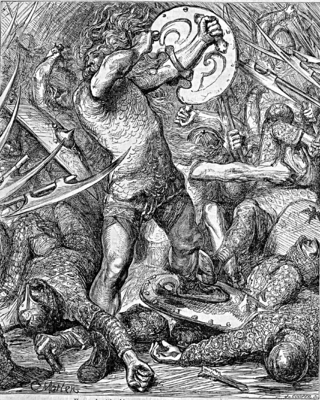
Hereward the Wake was an Anglo-Saxon nobleman and a leader of local resistance to the Norman Conquest of England. His base when he led the rebellion against the Norman rulers was the Isle of Ely, in eastern England. According to legend, he roamed the Fens, which covers parts of the modern counties of Cambridgeshire, Lincolnshire and Norfolk, and led popular opposition to William the Conqueror.

Richard de Clare, 2nd Earl of Pembroke, also Lord of Leinster and Justiciar of Ireland, was an Anglo-Norman nobleman notable for his leading role in the Anglo-Norman invasion of Ireland. Like his father, Richard is commonly known by his nickname, Strongbow.
Anglo-Norman literature is literature composed in the Anglo-Norman language and developed during the period of 1066–1204, as the Duchy of Normandy and the Kingdom of England were united in the Anglo-Norman realm.

Hiberno-Normans, or Norman Irish, refer to Irish families descended from Norman settlers who arrived during the Anglo-Norman invasion of Ireland in the 12th century, mainly from England and Wales. During the High Middle Ages and Late Middle Ages, the Hiberno-Normans constituted a feudal aristocracy and merchant oligarchy, known as the Lordship of Ireland. The Hiberno-Normans were also closely associated with the Gregorian Reform of the Catholic Church in Ireland and were responsible for the emergence of Hiberno-English.
Dearbhfhorghaill (1108–1193), anglicised as Derval, was a daughter of Murchad Ua Maeleachlainn, king of Meath, and of his wife Mor, daughter of Muirchertach Ua Briain. She is famously known as the "Helen of Ireland" as her abduction from her husband Tigernán Ua Ruairc by Diarmait Mac Murchada, king of Leinster, in 1152 played some part in bringing the Anglo-Normans to Irish shores, although this is a role that has often been greatly exaggerated and often misinterpreted.

RaymondFitz William Fitz Gerald, nicknamed Le Gros, was a Cambro-Norman commander during the Norman invasion of Ireland. Raymond was among the first of a small band of Norman knights who landed on the South coast of Ireland before being reinforced by a larger force led by Richard de Clare, 2nd Earl of Pembroke. He was active consolidating Norman rule over Ireland before he retired to his estates in County Waterford where he died in the late 12th century.
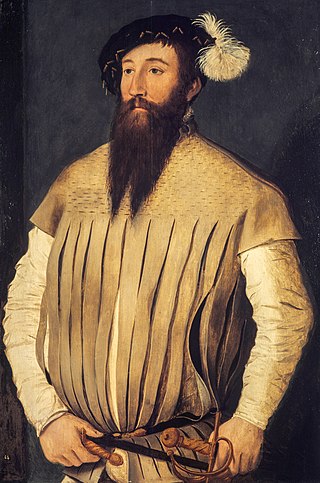
Sir Peter Carew of Mohuns Ottery, Luppitt, Devon, was an English adventurer, who served during the reign of Queen Elizabeth I of England and took part in the Tudor conquest of Ireland. His biography was written by his friend and legal adviser, the Devon historian John Hooker.

George Carew, 1st Earl of Totnes, known as Sir George Carew between 1586 and 1605 and as The Lord Carew between 1605 and 1626, served under Elizabeth I during the Tudor conquest of Ireland and was appointed President of Munster. He was an authority on heraldry and the author of Carew's Scroll of Arms 1588, Collected from Churches in Devonshire etc., with Additions from Joseph Holland's Collection of Arms 1579.
Risteárd de Tiúit was an Anglo-Norman nobleman and a member of Richard de Clare, 2nd Earl of Pembroke's Irish invasion force, and Lord Chief Justice of Ireland. His part in the original invasion is acknowledged in The Song of Dermot and the Earl, which recorded his grant of land in the western part of Meath under the authority of Hugh de Lacy in Trim.
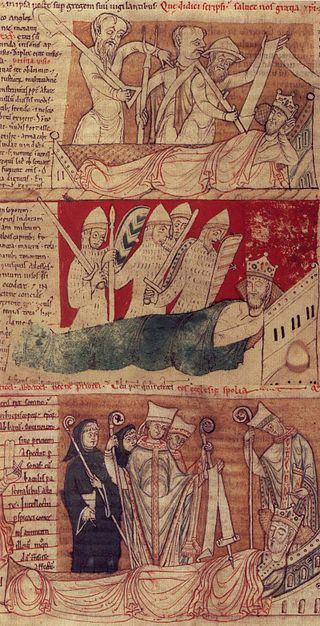
John of Worcester was an English monk and chronicler who worked at Worcester Priory. He is now usually held to be the author of the Chronicon ex Chronicis.
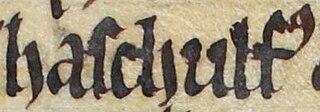
Ascall mac Ragnaill meic Torcaill, also known as Ascall Mac Torcaill, was the last Norse-Gaelic king of Dublin. He was a member of the Meic Torcaill, a Dublin family of significance since the early twelfth century.
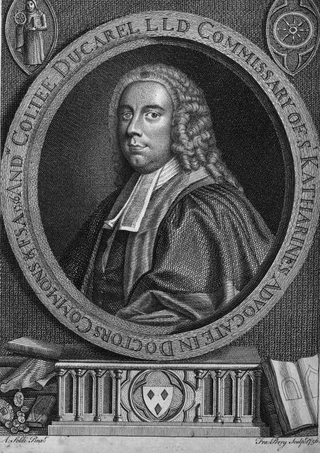
Andrew Coltée Ducarel was a French-English antiquary, librarian, and archivist. He was also a lawyer practising civil law, and a member of the College of Civilians.
Goddard Henry Orpen was an Irish historian. He attended The Abbey School, Tipperary and graduated from Trinity College Dublin.
Henry John Todd (1763–1845) was an English Anglican cleric, librarian, and scholar, known as an editor of John Milton.
Adam de Feypo is first mentioned in The Red Book of the Echequer 1166, p283 (England) as being one of the knights of Hugh de Lacy in Herefordshire, England. He was possibly a castellan of one of the de Lacy castles on the Welsh border. As the holdings of de Feypo in Herefordshire appear to have been modest it is no surprise that he reappears in Ireland in 1171 where there are great 'possibilities'.

Affreca de Courcy or Affrica Guðrøðardóttir was a late 12th-/early 13th century noblewoman. She was the daughter of Godred Olafsson, King of the Isles, a member of the Crovan dynasty. In the late 12th century she married John de Courcy. Affrica is noted for religious patronage in northern Ireland.
Seán mac Ruaidhri Mac Craith was an Irish historian known as the author of Caithréim Thoirdhealbhaigh.
Adam de Hereford was one of the first generation of Norman colonisers in Ireland.
The Composition of Connacht, or Composition of Connaught and Thomond, was a 1585 agreement between, on the one hand, the Gaelic and Gaelicised chiefs of Connacht and Thomond and, on the other hand, the English Dublin Castle administration of the Kingdom of Ireland, which replaced the multiple existing levies with a single tax on land holdings. The Composition was a form of surrender and regrant, a part of the Tudor reconquest of Ireland. The English leaders were Sir John Perrot, as Lord Deputy of Ireland, and Sir Richard Bingham, as Governor of the Presidency of Connacht.
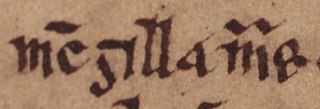
Ragnall Mac Gilla Muire was a twelfth-century leading figure of Waterford. He was one of several men taken prisoner by the English in 1170, when Waterford was captured by Richard de Clare. Ragnall is noted by a fourteenth-century legal enquiry which sought to determine whether a slain man was an Ostman—and thus entitled to English law—or an Irishman. Ragnall may the eponym of Reginald's Tower.
References
- ↑ "The Oxford Dictionary of National Biography" . Oxford Dictionary of National Biography (online ed.). Oxford University Press. 2004. doi:10.1093/ref:odnb/23311. ISBN 978-0-19-861412-8.(Subscription or UK public library membership required.)
- ↑ Regan, M., Orpen, G. Henry. (1892). The song of Dermot and the Earl: an Old French poem from the Carew manuscript no. 596 in the archiepiscopal library at Lambeth palace. Oxford: Clarendon press. p. vi.
- ↑ Lambeth Palace, MS Carew 596
- ↑ "Review of The Song of Dermot and the Earl: an old French Poem edited, with translation and notes, by Goddard Henry Orpen". The Athenaeum (3383): 283–284. 27 August 1892.
- ↑ Hickey, Elizabeth (1994). Skryne and the early Normans: papers concerning the medieval manors of the de Feypo family in Ireland in the 12th and early 13th centuries. WorldCat.
- ↑ Regan, M., Wright, T., Michel, F. (1837). Anglo-Norman poem on the conquest of Ireland by Henry the Second, from a manuscript preserved in the archiepiscopal library at Lambeth palace. London: W. Pickering.
- ↑ Regan, M., Wright, T., Michel, F. (1837). Anglo-Norman poem on the conquest of Ireland by Henry the Second, from a manuscript preserved in the archiepiscopal library at Lambeth palace. London: W. Pickering.